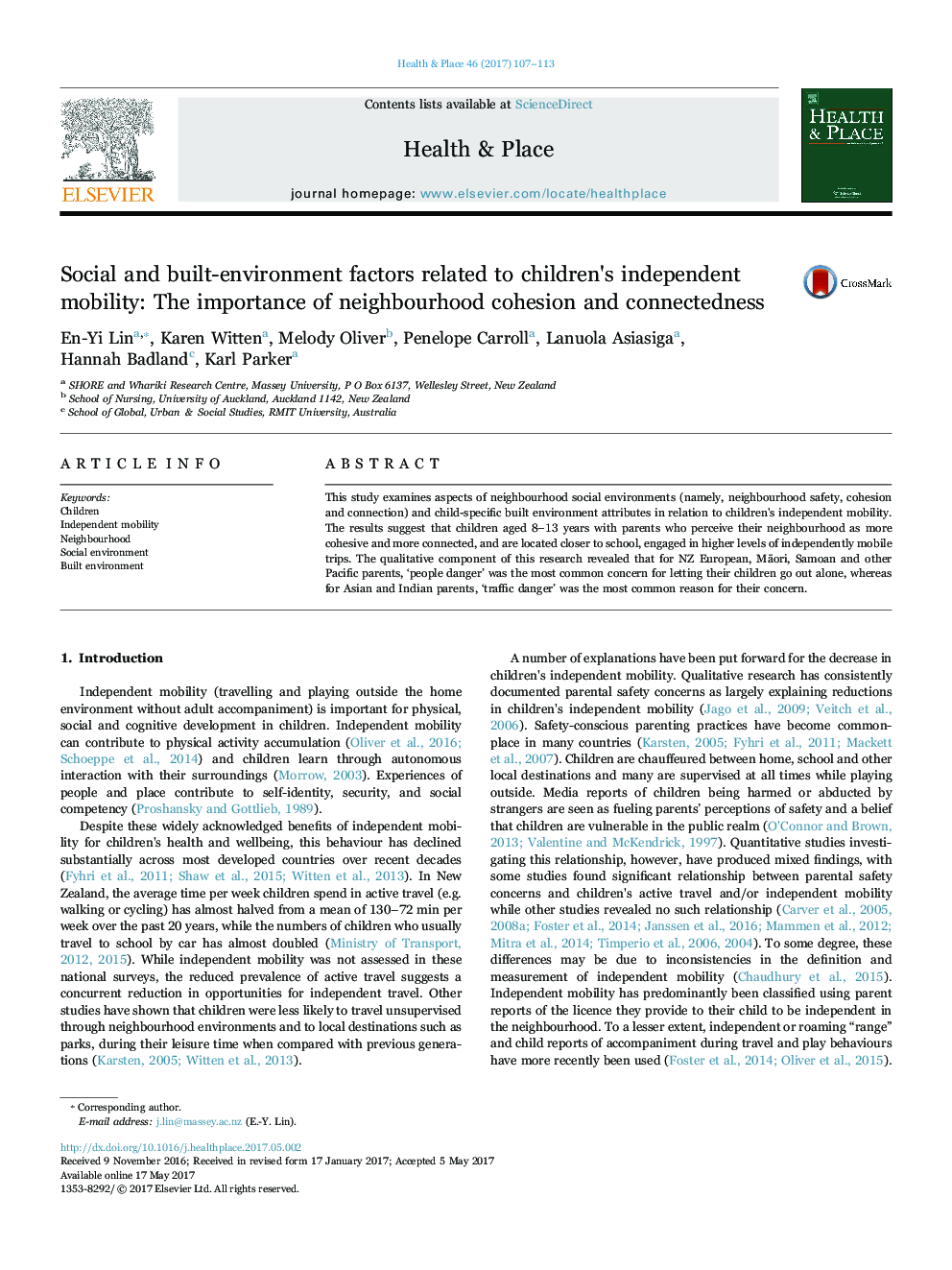| Article ID | Journal | Published Year | Pages | File Type |
|---|---|---|---|---|
| 5114830 | Health & Place | 2017 | 7 Pages |
Abstract
This study examines aspects of neighbourhood social environments (namely, neighbourhood safety, cohesion and connection) and child-specific built environment attributes in relation to children's independent mobility. The results suggest that children aged 8-13 years with parents who perceive their neighbourhood as more cohesive and more connected, and are located closer to school, engaged in higher levels of independently mobile trips. The qualitative component of this research revealed that for NZ European, MÄori, Samoan and other Pacific parents, 'people danger' was the most common concern for letting their children go out alone, whereas for Asian and Indian parents, 'traffic danger' was the most common reason for their concern.
Related Topics
Health Sciences
Medicine and Dentistry
Public Health and Health Policy
Authors
En-Yi Lin, Karen Witten, Melody Oliver, Penelope Carroll, Lanuola Asiasiga, Hannah Badland, Karl Parker,
